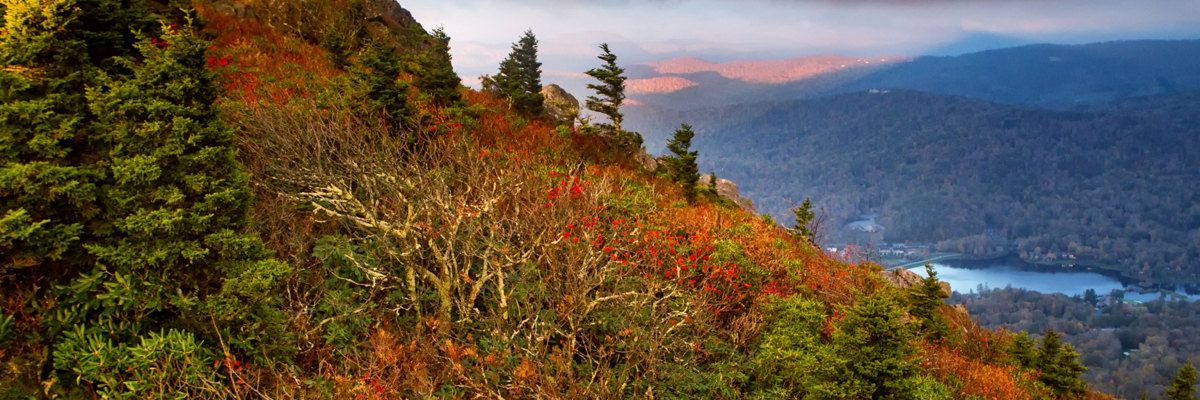
OK, Fall Leaf Color Devotees - The slumbering bear is awakening and getting ready for yet another fall leaf color season in the mountains of western North Carolina.
The spring and summer have not been too remarkable this year. While it's been hot off the mountain and getting drier (central NC is now officially in drought status, and even a bit of the mountains too!) it hasn't been so severe yet as to cause excessive stress to the trees. Remember, a little drought is thought to heighten the colors.
The one major development this summer has been the outbreak of yellow poplar weevil (Odontopus calceatus). These insects eat holes in the leaves, which also turn brown or bronze. There has been an especially severe outbreak along the I-40 corridor between Old Fort and Asheville. When I zipped by there a few weeks ago, it looked like the trees were turning colors early (too early to be normal!).
This native insect has outbreaks every 4-5 years. See the article below from extension personnel at North Carolina State University:http://ecoipm.org/2015/06/26/yellow-poplar-weevil-outbreak-in-some-mountain-areas/
Otherwise, it appears we are heading for our usual great fall leaf color season. However, as hot and dry as it's been, it would be nice to get some rain soon to prevent excessive drought, as too much dry weather can cause some trees to lose their leaves early (particularly yellow, or tulip poplars).
It appears that the timing of fall leaf color in this region is essentially invariant. Despite warm or cool summers or falls, peak colors only drift 3-4 days either way. Although some researchers have found evidence of warming here, others have not, and so, there has not been any major delay in peak color timing as found for trees in the northeastern states, where climates have warmed more (up to 1.5 C in some places).
We still don't have a good scientific understanding of what controls fall leaf color quality, although we know that warm, cloudy days in late September can dull the red colors. I've always said, year in and year out, that our fall leaf color season is highly dependent on the weather, and since weather can only be predicted with accuracy about a week or so ahead of time, so to it goes with fall leaf color quality. Maybe some day we'll get a better feel for this.
That's about it for our first official fall leaf color report. I'll report back in two weeks or so for another report. In the meantime, I'm off a week from this Sunday to visit my mother (now 89 and in good health) and also attend the 100th anniversary meeting of the Ecological Society of America, the largest scientific ecology organization in the world. The meeting is being held in Baltimore, which is just 45 miles from my home town of Frederick (home of Francis Scott Key and Roger Brooke Taney, former Chief Justice of the Supreme Court (during the Civil War).
I will be giving a talk on Ozone Trends in Great Smoky Mountains National Park. To summarize: the Clean Air Act Regulations, combined with NC's Clean Smokestacks Act, have reduced TVA NOx emissions (NOx causes ozone formation) by over 92%, and guess what? Ozone levels in the Park are greatly reduced. The air there (and in the High Country too, as well as all up and down the east coast) is now cleaner than it has been in over 25 years! Bryson City, in fact, has the cleanest air in all of North Carolina.
This shows the power of the Clean Air Act, and anyone who thinks that we would have this clean air without regulation (that is, voluntary) is totally misguided. Former President Bush II tried that in TX when he was governor, and Houston became one of the most polluted cities in the country. This is a great example of an environmental law (regulated by the U.S. EPA) that is having tremendously positive effects, and NOT hurting the U.S. economy.
Thanks for reading! Hope you all are making plans to visit the mountains this fall. Enjoy!!